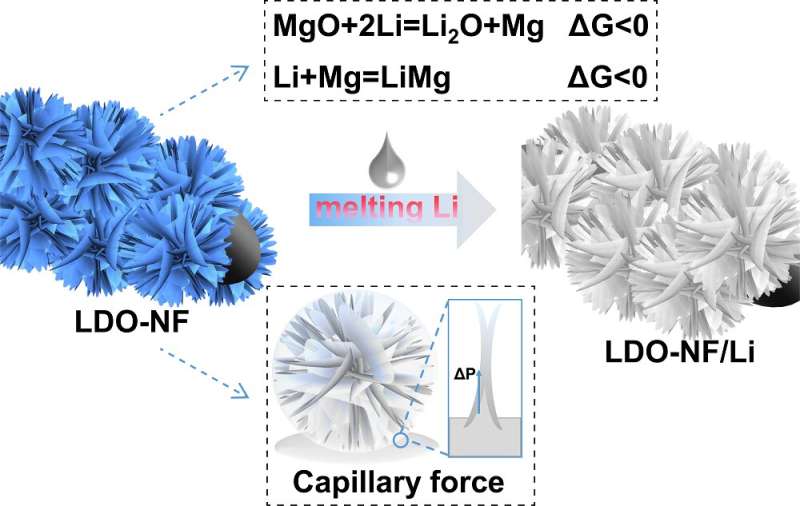
As electric vehicles and personal portable
electronics become more ubiquitous, researchers are trying to solve some of the
major limitations of current lithium-ion battery technology, which uses a
graphite anode and a lithium-based transition metal oxide cathode. In contrast,
lithium metal batteries, which use a lithium anode in addition to a lithium
cathode, may have the potential to solve some of these problems, creating high
energy, long-lasting, and safer alternatives to lithium-ion batteries.
For widespread lithium metal battery adoption, two key challenges need to be resolved. The first is that these batteries tend to form accumulations of lithium dendrites, which are metallic deposits. The second is that these batteries have large electrode volume variations. Both problems lead to a decline in performance and safety hazards.
In a paper published in Nano Research on October 11, researchers describe a technique for developing a three-dimensional composite lithium anode using thermal infusion, which successfully addresses lithium deposition and energy loss during charge cycles.
"Lithium metal batteries emerge as the promising electrochemical storage devices for electric vehicles due to their high energy density; however, these issues related to the growth of lithium dendrites and large electrode volume variations of lithium anode restrict their practical application," said researcher Feifei Cao of Huazhong Agricultural University in Wuhan, China. "It is highly desirable to explore suitable ways to address the issues of lithium anodes so these batteries can become a more practical option."
In order to achieve a lithium metal battery that addresses these challenges, researchers created a 3D scaffold and infused molten lithium onto it. The key to ensuring the safety of this technique is using a layer of nanosheets made out of a magnesium-aluminum double oxide. This material is described as lithiophilic, which means it attracts the lithium to generate an alloy medium.
The molten lithium is drawn toward the nanosheets and, through capillary action, is brought through the 3D scaffold. This capillary force is extremely important, explained Cao, because it facilitates the transient infiltration of molten lithium into the 3D host, creating a stable 3D composite lithium anode.
Researchers performed rigorous tests on the batteries developed with the new technique. When compared to existing technology, the batteries formed tubular dendrites, but only showed a small thickness fluctuation of 3%. In comparison, without the novel technology, the large electrode grew by 22%.
Researchers also tested the battery's coulombic efficiency or current efficiency, which measures the battery's capacity and energy loss. After 100 charging cycles, the battery's efficiency stayed at 98.6%. In comparison, the regular lithium metal batteries saw significant energy loss after only 23 charge cycles.
Looking ahead, researchers are planning how to continue to improve lithium metal batteries so that this technology can be more widely adopted. "For the next step, we will replace the heavy matrix with a light-weight matrix to yield a high weight ratio of active lithium to improve the battery energy density," said Cao. "We expect to prepare a high safety composite lithium anode that is competitive for high gravimetric energy-density cell with more than 500 Wh kg-1."

 Previous page
Previous page Back to top
Back to top







